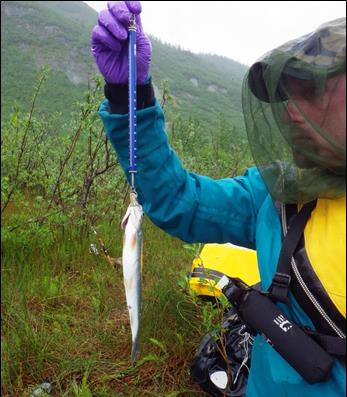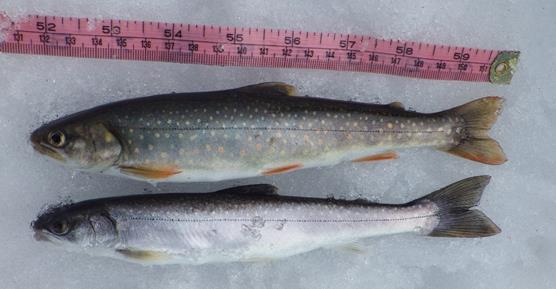Even remote national parks are not immune from airborne mercury contamination. How much has accumulated in the environment of Glacier Bay?
Project Dates
Field collections June 2012; sample processing, data analyses, reporting through December 2013.
Did You Know?
Mercury travels globally in the atmosphere; computer models show that Alaska is on the receiving end of rapidly rising releases of mercury from coal-fired power plants and other fossil fuel combustion in Asia.
Introduction

Mercury is a naturally-occurring, globally distributed contaminant that can cause mortality, impaired reproduction, stunted development, and abnormal behavior in exposed wildlife. Due in part to emissions from coal‐burning power plants and worldwide fossil fuel combustion, even remote national park environments may receive substantial mercury deposition from the atmosphere, usually via precipitation. Freshwater fishes are known to accumulate some of this mercury in their bodies, so scientists can analyze fish tissues chemically to learn about mercury cycling, rates of accumulation, and ecological risk, including the potential risk to humans consuming fish.
Through a collaborative effort between the National Park Service and the U.S. Geological Survey (USGS), fish samples collected from approximately 50 lakes spanning 17 national parks (including Glacier Bay National Park and Preserve) in the western U.S. and Alaska are being analyzed for mercury concentrations. This effort is designed to fill gaps in our understanding of mercury contamination and to evaluate the patterns of mercury distribution in remote western U.S. environments.
Methods
In 2012, researchers made field collections of resident fishes from several remote lakes in the park. Specifically, they collected 15 Dolly Varden char each from two isolated lakes in upper Glacier Bay (a lake north of Scidmore Bay and Stonefly Lake in Wachusett Inlet) and from Falls Creek outside the mouth of Glacier Bay proper. A variety of passive and active fishing methods were used, including gillnet, minnow traps, and hook and line.
Fish samples were shipped to the USGS analytical laboratory in Corvallis, Oregon where tissues were analyzed for mercury concentrations. Results are interpreted in the context of fish age (determined by analysis of structures in the ear called otoliths) and body length. Older fish and those feeding higher in the food chain tend to accumulate higher mercury levels. Final results will show whether mercury levels in park fish approach or exceed human and wildlife health consumption thresholds, as well as how levels compare both within and among park units.
Findings

Preliminary data from Glacier Bay and other parks were presented at the International Conference of Mercury as a Global Pollutant meeting in Scotland in July 2013. Results so far show that no fish from Glacier Bay National Park and Preserve exceeded human or wildlife health thresholds. Fish from North Scidmore and Stonefly Lakes have similar average levels of mercury (both 0.55 ug/g dw), while the average in fish from Falls Creek is lower (0.21 ug/g dw). This is in contrast to fish from some other parks in the “lower 48” and Alaska. The different fish species sampled (Dolly Varden char vs. other species) may have influenced the bioaccumulation potential, and hence the variation.
Learn More
On the Web: “Scale and Distribution of Global Pollutants in Southeast Alaska Network Park Watersheds,” 2011, by Sonia Nagorski et al. (https://irma.nps.gov/DataStore/Reference/Profile/2176772)
Last updated: September 13, 2016
